2024 Alaska Legal Tint Laws Explained
Imagine you’re a painter, with your car as your canvas. The law, in this case, the 2024 Alaska Legal Tint Laws, acts as your guide, limiting which hues you can use and where you can apply them. With the Visible Light Transmission (VLT) percentage serving as your palette, you’re allowed to darken your car windows only to a certain degree. But it’s not just about the darkness, there’s more to consider, like the tint’s reflection and color. Now, wouldn’t you want to know more about these guidelines, so you can paint your masterpiece without crossing any legal lines?
The information on myeyerx.net isn’t legal advice; consider it a starting point. Always verify with local and state authorities, as the final decision rests with you. We are not lawyers. For specific legal guidance, we can refer you to legal experts. Remember, knowledge of both state and local laws is essential, and even law enforcement might not be fully updated. We aim for accuracy but advise double-checking for the latest regulations.
Key Takeaways
Key Takeaways
Key Takeaways
- Sedan cars in Alaska can have non-reflective tint on the top 5 inches of the windshield.
- Front side windows must allow over 70% of light, while back side and rear windows must allow over 40% of light.
- Metallic or mirrored appearances on window tints are prohibited in Alaska.
- Violation of tint reflectivity rules can lead to penalties or fines.
Need Help Getting a Medical Exemption?
Our Doctors Are Here For You!
MyEyeRx was established with the objective of simplifying the complex landscape of state regulations pertaining to legal tint medical exemptions for window tinting. For individuals seeking to navigate these regulations without resorting to a do-it-yourself approach, we offer a streamlined solution. Our team includes qualified medical professionals who are available to conduct consultations via Zoom. These sessions are designed to assess your eligibility for a medical exemption, ensuring a personalized and efficient process for acquiring the necessary documentation.
Understanding Alaska Tint Darkness
In understanding Alaska’s tint darkness regulations, it’s critical to know that for sedan cars, the windshield can have non-reflective tint on the top 5 inches. The front side windows must allow over 70% of light, and the back side and rear windows must permit over 40% of light to pass through. These are key aspects of Alaska window tinting laws that you should be aware of.
Alaska tint laws are explicit about the permissible tint darkness. Clear comprehension of these laws ensures you’re in compliance and safeguards against potential fines. The law clearly stipulates that the front side windows: Must allow more than 70% of light in. This regulation is significant in maintaining adequate visibility for the driver and is a crucial safety measure.
The back side and rear windows, according to the laws, must allow more than 40% of light. These requirements are part of the broader Alaska tinting regulations, designed to balance the need for privacy, aesthetics, and safety. The allowed legal limit is given, but remember, a variance of up to 3% might be tolerated, due to the manufacturing process of the tinting materials.
Alaska tint laws also address the issue of reflectivity. The law prohibits metallic or mirrored appearances on front and back side windows for both sedan cars and SUVs/vans. This is to prevent any potential glare that could impair other drivers’ vision.
Reflectivity Rules in Alaska
Reflectivity rules are another key aspect of Alaska’s window tint laws, particularly in relation to the prohibition of metallic or mirrored appearances on the front and back side windows of both sedans and SUVs/vans. These rules serve to control the amount of light that window tints reflect, ensuring that excessive glare doesn’t impact other road users or distort driver visibility.
In Alaska, the tinting rules are clear and straightforward: it’s unacceptable to have a metallic or mirrored finish on your vehicle’s window tint in Alaska. This is because such finishes tend to reflect incoming light, which could be a potential hazard on the road.
To help you better understand, here are some key points about the reflectivity rules in Alaska:
- The tint should not have a metallic or mirrored appearance.
- The tint should not reflect excessive light that could be a nuisance or danger to other road users.
- The tint’s Visible Light Transmission percentage should adhere to the stipulated standards.
- Tint reflection for SUVs and sedans should comply with the set regulations.
- Violation of these rules can lead to penalties or fines.
Other Alaska Tint Regulations
Diving deeper into Alaska’s tint laws, you’ll find that there are no restrictions imposed on side mirrors in relation to window tinting. This means you have the freedom to tint your side mirrors as you see fit. Still, while you’re given this liberty, it’s good to remember that visibility is a key safety factor when driving.
When it comes to tint colors, Alaska window tint laws only allow green, gray, bronze, and neutral smoke. This is to ensure that law enforcement can easily see through your windows and retain public safety.
Another noteworthy regulation is that non-reflective tint is allowed on the top of the front windshield. This is beneficial as it helps to reduce glare, improving your driving visibility.
To make this information more digestible, here’s a quick summary in table form:
Alaska Tint Laws | Description |
Side mirrors | No restrictions |
Tint colors | Green, gray, bronze, neutral smoke are the ONLY colors allowed |
Front windshield | Non-reflective tint allowed |
Manufacturers aren’t required to certify the film they sell for window tinting in Alaska. However, for your safety and to ensure you’re within the law, it’s best to buy from reputable sources.
Also, tinted vehicle windows don’t require a sticker to identify legal tinting. But, it’s crucial to understand that legal tinting is required to avoid run-ins with the law.
Lastly, Alaska has provisions for medical exemptions for special cases. Frequent vehicle travelers with certain medical conditions can apply for this exemption, which must be renewed annually by a licensed physician.
Penalties for Tint Law Violations
While it’s vital to understand the various regulations surrounding window tinting in Alaska, it’s equally important to be aware of the potential penalties for tint law violations. If you fail to comply, you might find yourself facing hefty fines, surcharges, and additional legal consequences.
Here’s what you need to know:
- Violating Alaska tint laws can lead to fines of up to $300. On top of this, a surcharge of $10 is required if the violation is not rectified within a certain timeframe.
- Enforcement and penalties may vary based on jurisdiction. It’s advisable to confirm specifics with your local Department of Motor Vehicles (DMV) or law enforcement authorities.
- Compliance is a must. Failure to adhere to these regulations can result in monetary penalties and additional charges.
- Stay informed. Alaska’s tint laws may change, and it’s your responsibility to keep up-to-date to avoid penalties.
- Medical exceptions are allowed. If you have a medical condition that necessitates darker window tints, you can apply for an exemption. However, certain requirements and regulations still apply.
Window tinting can offer benefits such as reducing glare and keeping your car cooler. However, these benefits must be balanced against the requirements of Alaska law. For side windows, a minimum of 76% visible light must be allowed through the tint.
Legal Tint Benefits in Alaska
You’ll find that legal window tinting in Alaska not only offers privacy but also reduces glare and provides protection against harmful UV rays. Tinting your vehicle’s windows within the state’s rules and regulations ensures that you reap the maximum benefits without running afoul of the law.
Before deciding to tint your windows, it’s crucial to identify legal tinting in Alaska. The state has specific restrictions on the percent of visible light allowed through your windows. This is particularly important for your tinted rear window and side mirrors.
To give you a clearer picture, here’s a table that outlines some of these rules:
Window | Legal Tint Limit |
Front Side Windows | Must allow more than 70% of light in. |
Back Side Windows | Any tint darkness can be used. |
Rear Window | Any tint darkness can be used. |
Side Mirrors | No restrictions. |
Besides the obvious benefits, there are also medical exemptions for special tint in Alaska. If you have certain medical conditions that require additional window tinting, you can apply for an exemption, subject to annual renewal by a licensed physician. We have put together a page detailing how to get a tint exemption in Alaska.

Don't want the hassle? Let us take care of your exemption for you!
MyEyeRx.net is here to help you streamlines the process of obtaining a medical exemption for window tint online. Explore our services to easily transform your window tint from non-compliant to legally approved!
Because of the differences in each of the 50 states, we’ve crafted distinct guides for securing window tint medical exemptions for each of the individual states.

Toriano (Tory) Dewberry
Become one of the many satisfied clients Toriano has assisted in obtaining a medical exemption without stepping out of their homes. Click the button below to begin and discover if you're eligible for a medical exemption.

Toriano (Tory) Dewberry
Become one of the many satisfied clients Toriano has assisted in obtaining a medical exemption without stepping out of their homes. Click the button below to begin and discover if you're eligible for a medical exemption.
Frequently Asked Questions (FAQ'S)
What Is the Tint Law in Alaska 2023?
You’re asking about Alaska’s tint laws for 2023. Law enforcement takes this seriously due to safety concerns and visibility challenges. State regulations mandate specific tint percentages for different vehicles. Legal repercussions can occur if your window tinting doesn’t comply. Exceptions exist, like medical exemptions. Always check your tint materials during vehicle inspection to avoid issues. Remember, regulations might change, so stay updated to ensure your compliance.
What’s Darker 35 or 50 Tint?
In the world of window tints, lower numbers mean darker shades. So, 35% tint is darker than 50%. It’s not just about aesthetic appeal, though. The darker the tint, the less light it lets in, affecting visibility. Always consider the tint’s materials for durability and UV protection, and remember legalities. Safety is paramount, so ensure your tint installation doesn’t compromise your ability to see. Glass reflection can also be affected, so choose wisely.
What Does 70 Tint Look Like?
You’re curious about 70% tint? It’s quite light, letting in a lot of sun. This keeps visibility high, which is great for safety considerations. The aesthetics are subtle, not drastically altering your vehicle’s appearance. It’s cheaper too and easier to install. However, it may not offer all the heat reduction or privacy you’re after. It’s crucial you check the durability and cleaning instructions, though, to ensure it’ll last.
What Is the Darkest Tint Allowed?
In Alaska, the darkest tint you’re allowed to have depends on the vehicle type. For sedan cars, you can’t go darker than 70% for front side windows and 40% for back side and rear windows. For SUVs and vans, the same rules apply. Remember, darker tints may increase tint durability, but they also present visibility challenges and safety concerns. They may affect your insurance too. So, ensure you’re aware of all implications before the installation process.

MyeyeRx.net
Ensuring your tint is not just about style, but legality and safety.
Let us guide you through the maze of state regulations to legal clarity.

Conclusion
So, you’re wary about tinting your car due to potential legal hurdles? Don’t fret! By understanding Alaska’s 2024 tint laws, you’re already a step ahead. Remember, it’s all about the right VLT percentage and avoiding metallic finishes. Yes, navigating these regulations may seem tricky, but it’s totally doable and worth the benefits. After all, who doesn’t want a cooler car and better privacy? Just keep up with the laws, and you’re good to go!
Looking to find a Reputable Window Tint Company In Alaska?
Checkout Tintingnearme.com to Find A Local Tint Shop
After learning about window tint laws, the next step is to find a trusted local window tinting shop. Tinting Near Me offers a selection of reputable shops knowledgeable in both quality tinting and legal standards, including medical exemptions.
Choose a shop from their list for expert service that meets legal requirements and enhances your vehicle’s compliance and protection.


